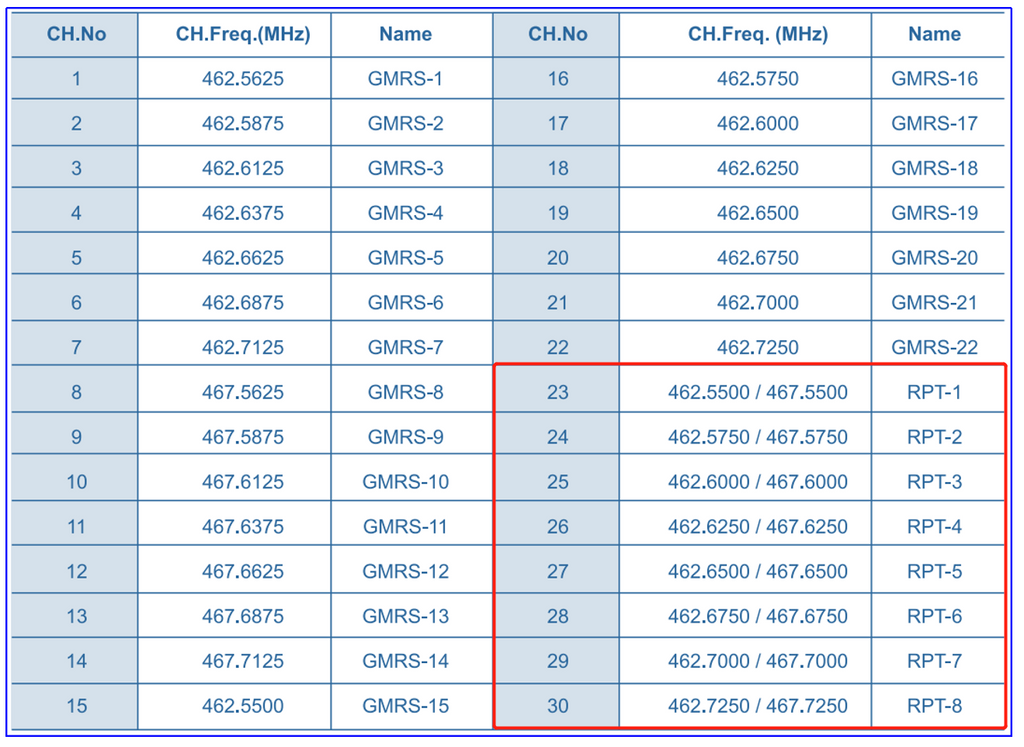NEPAGMRS uses the Bear Creak 725 repeater. That means that the repeater receives the transmission from your radio on 467.725 and re-transmits it on 462.725. That is a 5Mhz offset. Most GMRS radios have that offset already setup in the radio. The Bear Creek 725 is setup with tone codes of D131N. That is a DCS tone code. It is set for both the RX and TX frequency. You need to set your radio tones to match those of the repeater. If you don’t have the tone code set for the TX repeater frequency 467.725 then the repeater won’t hear your transmission. Analog codes, CTCSS, and digital codes, DCS, work exactly the same way there are just a lot more codes to use with DCS.
If a person is on the GMRS channel 22 simplex with NO tone codes set on their radio they will hear all of the transmissions coming from the repeater. (remember the repeater is transmitting on 462.725 with a D131N tone.) However, they will not be able to transmit back since they would also be transmitting on the 462.725 frequency. (Remember the repeater receives on 467.725 with a tone of D131N). Since they do not have a RX tone set on their radio it does not filter anything out allowing them to hear all signals that are within the range of their radio.
This can be confusing. Think of tone codes as filters. They filter out all other signals from the radio. The tone code is an inaudible tone that transmits with your radio transmission. When you have tones set your radio will only allow signals in and out that have that tone embedded in the signal. If you don’t have any tones set you will hear everything.

